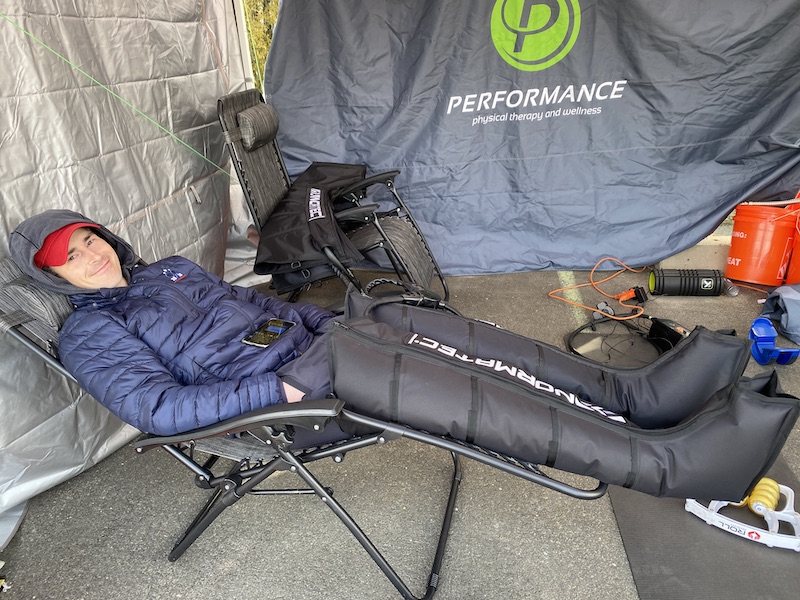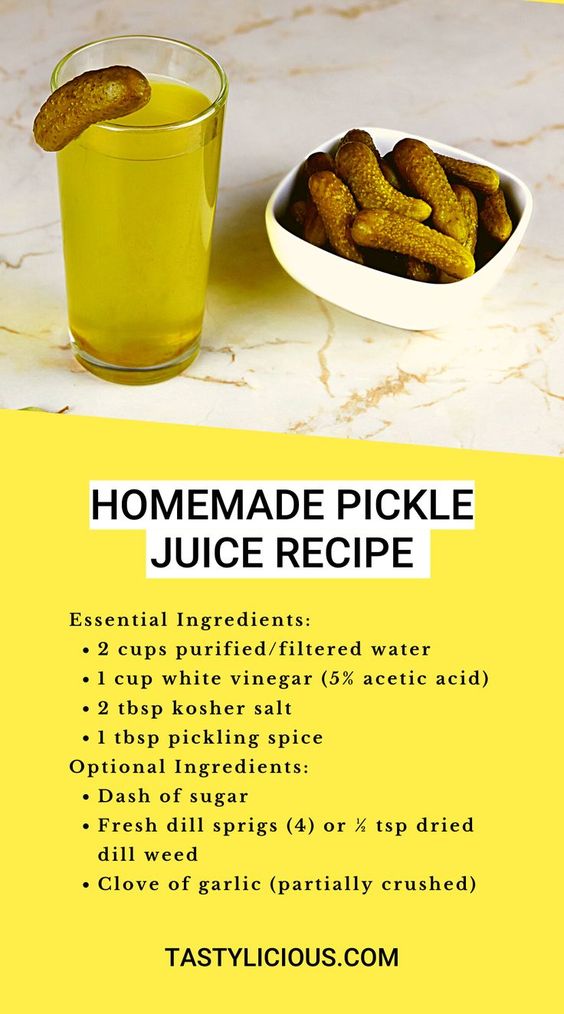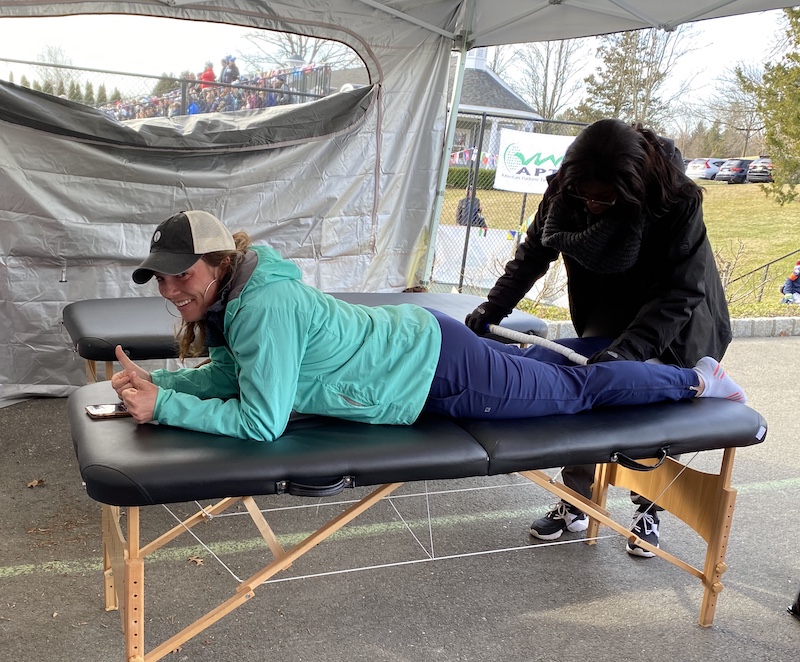NEWS
A Muscle Cramping Dilemma

What Is a Muscle Cramp?
In the science world, a muscle cramp is a painful, physiological disturbance of skeletal muscle where a motor neuron delivers a sustained, involuntary, high-firing frequency to muscle fibers, a select muscle, or muscle groups. In the athletic world, to put it neatly, it’s a system malfunction.
What Triggers Cramping?
Researchers are not yet certain what causes exercise-associated muscle cramps (EAMC). There are two main schools of thought.
- Electrolyte Imbalance Theory - Anyone ever told you to eat a banana or drink pickle juice when you were feeling the effects of a muscle spasm? That advice is based off the idea that when we sweat we are not just losing H2O, we are expelling valuable electrolytes that are needed for proper muscle function. According to this theory, the loss of electrolytes creates a setting for nerve impulse alteration and muscle dysfunction. However, there is a serious lack of scientific evidence to back it up. Studies have shown that there is no significant difference between electrolyte balance in the blood serum of athletes who did cramp versus those who didn’t, post endurance activity. However, there is evidence to support that well-hydrated and electrolyte-supplemented athletes may delay the onset of EAMC.
- Neuromuscular or Fatigue Theory - This newer hypothesis maintains that muscle fatigue is the insult that sets the stage for the misfiring of motor neurons causing cramps. An overworked muscle reaches a stage of fatigue causing faulty neuromuscular activity. The change is an “excitatory” alteration, meaning your muscle can’t properly relax and the muscle is staying under a sustained amount of tension. The muscle is being overworked and not getting a break. The final insult is when your brain can no longer regulate the proper muscle contraction needed to sustain activity and it overshoots the mark, leading to that excruciating prolonged spasm of muscle.
But why do some athletes fatigue quicker than others, even when they appear to be in as good or better shape than their opponents? The answer that is most pertinent to platform tennis players is likely stress. The tight moments in tournament matches seem to drain our legs and arms much faster than practice matches. One crucial difference in muscle activity when under mental stress is an increase in baseline muscle tension. The increased tension means lower efficiency, and this leads to premature fatigue—setting the stage for EAMC. If the muscle remains at a slight contraction and does not properly relax between points, between games, after matches, you are exhausting your energy stores more quickly. Perhaps mental toughness is not the best goal—maybe it is mental plasticity we should all seek!
Strategies
Now that we have explored the possible mechanisms of cramping, here are some on-court and off-court strategies to help avoid it.
Hydration
Though it hasn’t been proven that dehydration or loss of electrolytes is the sole cause of cramping, it is safe to say being well-fueled can help maximize your performance. Hydration on match day should start hours before you step out on the court to be effective, some say days before. Include beverages that have electrolytes—sodium, potassium, and magnesium—or add them via tablets. In cases of consistent cramping, ask your doctor about supplementation of minerals, ones that are crucial to nerve function.
Training
Start thinking of yourself as an endurance athlete. If you need your body to be able to play four-plus hours of paddle tennis (and play well), you have to change your workouts and court time to reflect that goal. A good balance of training includes cardio, weight training, and plyometrics. Don’t neglect your fitness. We all love our court time, but staying fit will keep you healthy and improve your play.
Stress Management and Relaxation
Your ability to relax in moments between points/games/matches is critical to avoiding premature fatigue and injury. Yoga, massage, and meditation are great off-court strategies to teach yourself to mentally and physically relax. During paddle, we generally do not sit down during changeovers. It is important to make sure you are getting a real break for your body during that minute. Put your racquet down. Shake out your legs. Deliberately relax your fingers and toes and employ some slow-breathing techniques—even just smiling has been shown to reduce tension.
Active Cramp Management
Use your judgment and take a timeout to assess the situation. Extra gentle stretching, slow breathing techniques, and massage are proven strategies to manage active cramping. When applying a stretch to a muscle that is cramping, less is more. Use very little force; the goal is to relax the muscle, not push it to lengthen. If you are dealing with a foot or calf cramp, stay on your feet and simply slowly walk around. Eating a banana or chugging Gatorade will not change your electrolyte balance quickly enough to stop your cramp in the near term. Be advised that playing through an active cramp is dangerous and can cause muscle damage.
Bottom-line, whether it is muscle cramping or just not performing your best after a couple of hours of play, staying ahead of the game with good hydration, proper training, and relaxation techniques will serve you well for your long days on the court.
Got Pickle Juice?

Pickle juice might help your cramp, but it’s not why you might think. If you are experiencing an active muscle cramp, downing salt-laden pickle juice isn’t going to replenish the sodium in your body for over 30 minutes. However, researchers have found that it may trigger a reflex in the back of your throat known to decrease the activity in the nerves responsible for muscle contraction, resulting in muscle relaxation. Don’t have pickle juice handy? Research shows any salty, “noxious”-tasting substance might do the trick, like mustard or hot sauce.

Dr. Roopali Hall is a chiropractic physician in Westport, CT, who specializes in sports medicine and medical acupuncture. She has been ranked in the top 25 and was a member of the winning 2019 Region II President’s Cup team. A graduate of Amherst College, she captained the women’s tennis and squash teams.


